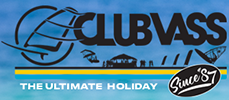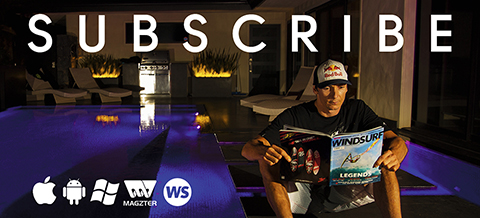THE GENTLE ASSASSINS
7.0M NO CAM FREERACE SAIL TEST 2017
Test Editor Tris Best // Second Testers Maurin Rottenwalter & Dan Hallam
Photos Alex Best // Test location Portland Harbour
Designed for maximum performance with minimum fuss, the no cam Freerace design is very popular in today’s market due to the increasingly high levels of easily accessible speed available to the end user. Read on as the test team put a collection of 2017’s latest streamlined engines under review at the Weymouth dragstrip.
This test was originally published in the April 2017 issue.
Freerace was a natural pathway to evolve from the freeride juggernaut that swept throughout the sport in the mid-nineties. The idea to was combine freeride ease and practicality with top-end performance, and in no category was this truer than in freerace no-cam sails. The problem with any category when you discuss performance, however, is the insatiable need to be the best; to beat your opponents. And when it comes to pushing performance, it is a measurable quality, so quite often stimulates tunnel vision at the cost of everything else, including user-friendliness!
FINDINGS
What is interesting with the freerace sails on display for 2017 is that all of them seem to have addressed this issue. There is a degree of softness built in, be it through extra material and stretch through the luff sleeve, the inclusion of a Dacron luff panel or the adoption of the latest concept that has emerged – the use of a reduced luff curve. Softness means response and breathability; the ability for the sail to be pumped onto the plane in light airs, to go neutral in transition, absorb impacts as you travel over harsh sea states or move around the rider whilst blasting, without pulling their stance out of shape. It makes it easier to sail for long periods and more forgiving for the less dedicated. Some brands have been beating this drum for many many years, but it seems the rest have caught up now and the result is a wave of renewed energy in development, proving that speed and ease are actually compatible!
There are four brands seemingly leading the march on the endorsement of reduced luff curves, using their own concepts for countering any loss in stability. Ezzy has always favoured a reduced curve, using clever seam shaping to lock the centre of effort forward in the draft. North Sails and Severne are the two brands that have grabbed the limelight recently, developing material lay-ups in the leading edge of the foil to resist any profile decay. Neil Pryde has come from another angle, extending the length of the luff to use the basic physics principle of force over distance. Whatever method is used, the reduction of curvature means the loss in skin tension and stability at the top end (the negative that needs to be countered), but on the plus side, breathes life, response and feel into the mast, extending bottom-end aptitude and comfort.
Of the nine sails on test here, a third are rigged on RDMs (under the recommendation of the brands), whilst the rest opt for SDMs. The ‘stick’ used in the sail is another method of changing the sail’s character and feel – the loose general rule being RDM for softness and ease; SDM for deeper profiles and a firmer response. With time being the over-riding restriction, we only got a chance to try each sail on the recommended mast provided by the brand … but it is something to bear in mind. When top-end performance comes into play, the variables (such as the mast used) become increasingly vital to achieve the precise goal aimed for by the designer. So the obvious question to ask is – does your existing mast fit the bill?
SUMMARY
For bottom end grunt and dependability, the Goya Mark is right up there. Setting on a stiffer mast than most (to compensate for the convention that a large RDM is usually softer?), the depth of its profile and constant feedback make it a marvel in light airs. At the other end of the scale is the Point-7, lacking shape and drive at the bottom end, but making up for it with a blistering turn of speed when it gets going. The only other sail to really touch it speed wise is the Neil Pryde Hellcat, yet its racing pedigree is very apparent, and it takes no prisoners. The Severne NCX is also incredibly fast, its light handling being the best in group, helped by its dropped clew eyelets to extend control. The North E_Type and Ezzy Cheetah are in effect fast freeride sails, doing everything you would expect of them and over a massive wind range. Extending upon this are the GA Sails Matrix and Loftsails Oxygen – two true all-rounders that can mix it in the light airs, yet have the capacity to be re-tuned for excellent speed and slippery speeds in the top end. That leaves the Simmer, which, with its recommended usage of a 430cm SDM makes it incredibly practical to extend the range of any quiver. Some great sails to consider, making powered blasting both fun and accessible.
THE LINE UP



